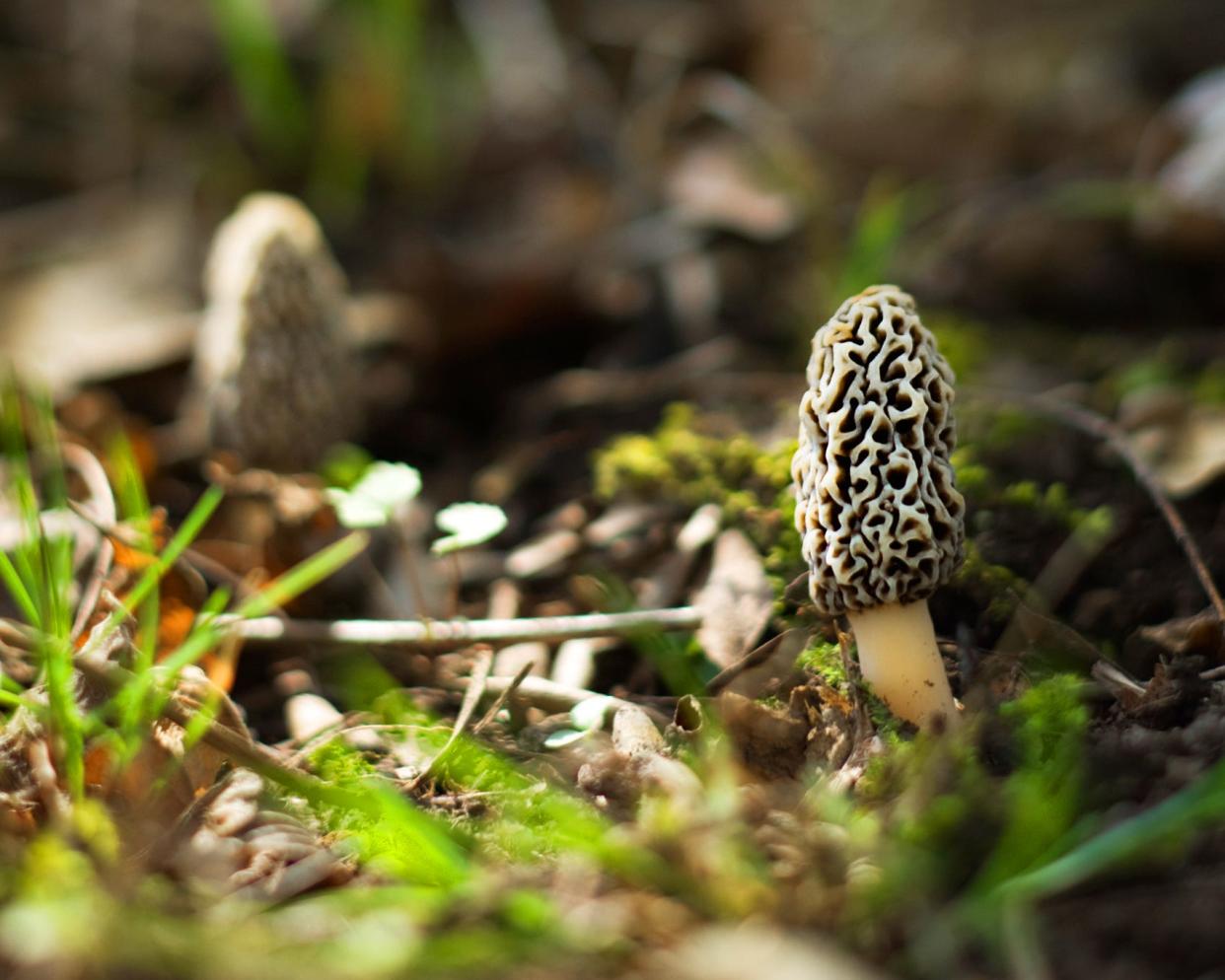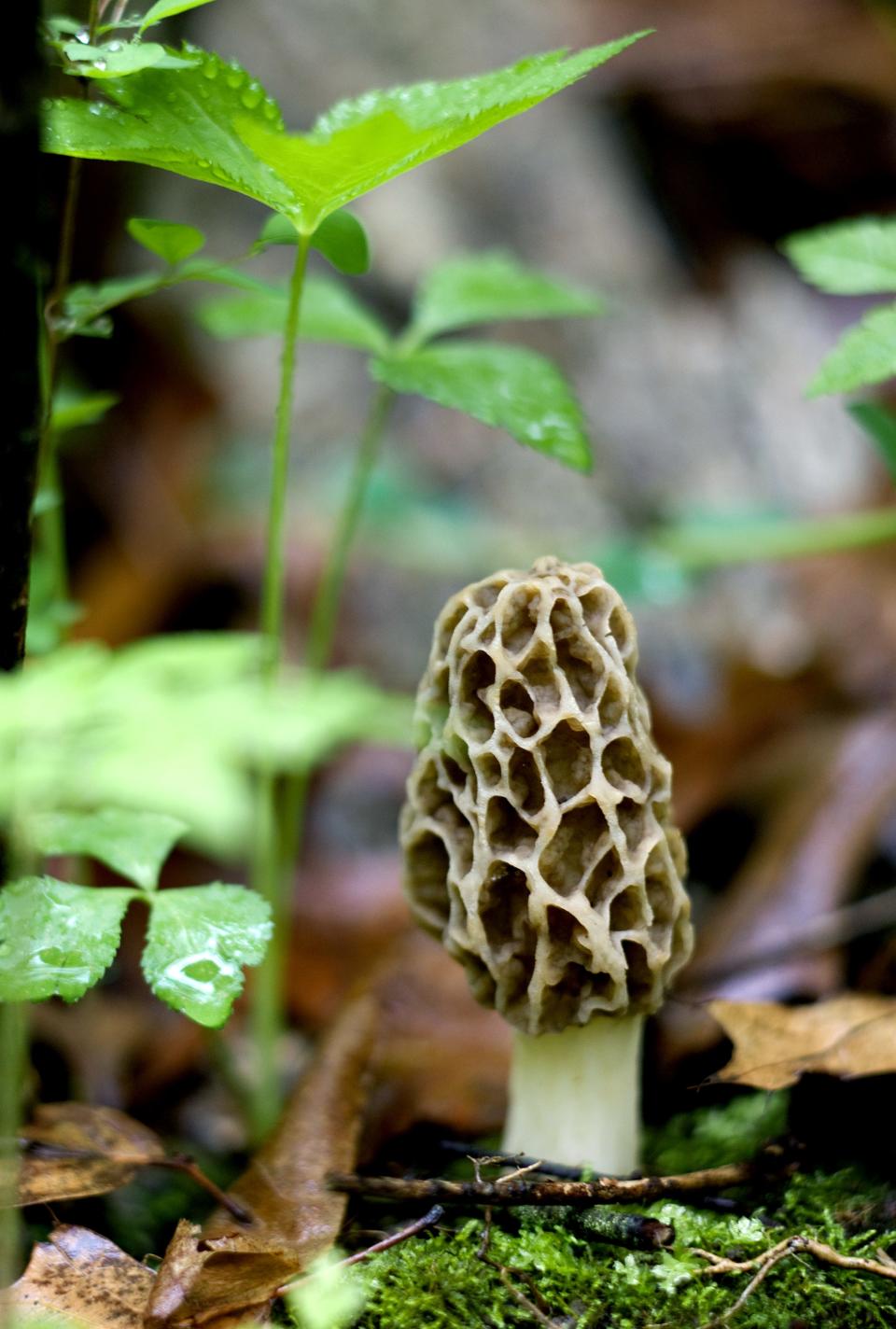What's tasty, free and scarce? Morel mushrooms are starting to pop in a forest near you

They're a rare, free delicacy. Their followers are fanatical. And they're underfoot now in a woods near you. The march of the morel mushrooms is underway.
As spring goes on, starting in the South, the hollow, spongy fungi emerge – just like their hunters. If you're not one, you probably know one. If you're lucky, you know one well: Morel collectors are famously protective of their hunting sites, and for good reason. Beyond their deliciousness, morels are notoriously elusive, and expensive to purchase — when they're even available.
But right now, in Illinois, they're free for the taking. If you can find them.
Tracking sightings online
One good resource for timing your hunt is The Great Morel website. Its sightings map details submitted reports of successful outings. As of April 19, it showed morel eruptions from Georgia to Illinois — and a lone Tri-County Area sighting, in Pekin on April 14.
Another resource is the Illinois Morel Mushrooms Facebook page. It also has a mushroom progression map. On April 13, it added its first Tri-County sighting, in Tazewell.
The Facebook page Morel Mushroom Sightings reported a handful of tiny morels found near Springfield on April 17, Easter Sunday.
The 2022 morel mushroom season is gathering steam.
Essence of Peoria: How a foul fragrance became the talk of the town (and beyond)
Picking the right time
Tom Nauman is owner of Morel Mania in Magnolia and one of the names most synonymous with morels in the Midwest. His website is billed as "The world's number one supplier of morel mushroom products." It's a clearinghouse of morel-related merchandise, sightings, events and more.
He expects the season to be in full swing by the last week of April or first week of May. Tradition holds that the Peoria-area season lasts until Mother’s Day.
But before you head out in search of the fleeting fungus, here are some things to know.
What they are
Mushrooms are the fruiting bodies of mycelium. Roughly, mycelium is a root system and the mushroom is a flower. Morel mushrooms are famously finicky, only sprouting under exacting conditions based on nearby trees, climate, moisture, temperature and other factors.
More: This Peoria site is providing a key ingredient for a local brewer's new beer
The fungus among us

There are three different types of true morels in Illinois, most experts agree. Unless they don't. Like most everything morel-related, the lore may vary.
Nauman cited three varieties: blacks, which generally arrive first, followed by grays/yellows/whites, and finally "half-frees," whose caps are half-free from the stem. He allowed that the timing can vary, and half-frees are a matter of some debate.
Regardless, he said, "Call 'em Bill or Bob or Joe, and they're still gonna taste good."
Where you can hunt
No license is required for mushroom hunting in Illinois, but foragers need permission to hunt on private land. Hunters on public sites must follow collecting regulations and hours. Collection is allowed in many state parks and recreation areas but is banned in dedicated nature preserves. Areas that offer spring turkey hunting forbid mushroom collecting until after 1 p.m. daily.
Hungry for a trip? Here are 5 Illinois restaurants worth the drive from Peoria
Where you should look
For something that can't move, morels are maddeningly elusive. Their pockmarked surfaces make them easy to miss amid the forest duff. They're most prevalent near dead elm and living ash trees, but also can be found beneath sycamores, cottonwoods, silver maples, hickories, white and red pines and in old apple orchards, among other places. Early in the season, some hunters target warmer, south- or west-facing hillsides, which get more sun, followed by north and east slopes later on. When you find one morel, you'll likely find more nearby.
Increasing your odds
The best bet is to go with a veteran hunter, who not only may have a zealously guarded "secret spot" but also can help identify poisonous false morels.
Wait, there are poisonous morels?
In a sense. So-called "false morels" look superficially similar to true morels but are more solid, more brain-like in appearance, and usually reddish brown. True morels are always hollow, while imposters are chambered (not completely hollow). The difference is usually apparent, but as the adage goes, "when in doubt, throw it out."
More: Want to grow your own cannabis? Tru Health Care and Wellness in Peoria can help
What you should bring
Carry a pocketknife to slice through the stems (or to ensure the mushroom is hollow). Use a mesh bag both to keep your catch fresh and to redistribute the mushroom spores as you walk, for future harvests.
Are they safe to eat?
Yes, and delicious. Morels have a delicate, nutty flavor. Chefs and amateurs alike prize their unique taste. But they shouldn't be eaten raw.
How to cook them
Morels can be fried, sauteed, used as stuffing and more. Uneaten morels can be dried for future use.
Fun facts
Harvesting morels is a multimillion-dollar industry. The fungi can fetch a pretty price at festivals and farmers markets.
According to Wikipedia, morels have been known by many local names: dryland fish (sliced vertically, breaded and fried, their outline resembles a fish); hickory chickens (in parts of Kentucky); and merkels or miracles (from folklore of how a mountain family avoided starvation by eating morels). In parts of West Virginia, they're called molly moochers, muggins or muggles. Other names for true morels are sponge mushrooms and waffle mushrooms or, in the Appalachian woodlands, haystacks or snakeheads.
Humans aren't the only species that savors the mushrooms. In Yellowstone National Park, black morels are consumed by grizzly bears.
All in all, pretty impressive for a freely foraged fungus that's 90% water — and 100% elusive.
This article originally appeared on Journal Star: Morel mushrooms are starting to pop in central Illinois woodlands

